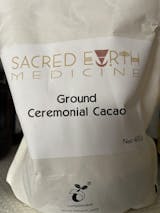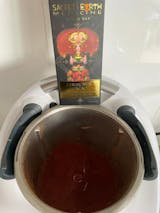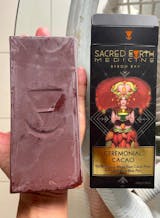Day of the Dead - Sjha'ra'a Personal Account
Many years ago, Shaa and I had the privilege of experiencing Day of the Dead (Dia de los Meurtos) in Mexico City, less than a year after my mother had crossed over. It was an unforgettable journey into a world where tradition, spirituality, and celebration converged in a vibrant tapestry of colours and emotions. It had such a rich, deep impact that supported my grieving then and has helped inform the way I honour my ancestors now.
So, what is Dia de los Meurtos all about, and what medicine can it offer all of us now?
With origins connected to the Aztecs, Dia de los Muertos - or the Day of the Dead - is a significant cultural festival that traditionally occurs annually on November 1st and 2nd (dates can vary). The festival is honoured primarily in Mexico, as well as in other Central and South American countries, and within Mexican communities around the globe.
Held to celebrate the cycle of life and death and those who have passed through the veil, this festival’s modern and colourful incarnation sees streets sporting huge parades and people harnessing the spirit of the festival by dressing up and painting their faces to look like skulls.
The traditional origins of Dia de los Muertos
The roots of the Day of the Dead celebration go back to the rituals honouring the dead in pre-Columbian Mesoamerica 3,000 years ago. It is thought that Dia de los Muertos originates from an Aztec celebration venerating the goddess Mictecacihuatl, whose responsibility was to guard and protect the bones of the dead.
It was believed that upon death, a person’s soul made the journey to the depths of Chicunamictlan – the Aztecs underworld or Land of the Dead – and that to reach this final resting place they must first go through nine levels of challenge lasting several years.
From October 31st through to November 2nd the veils are considered thin and the spirits of the dead can more easily reunite briefly with their families again.
Accordingly, at this time family members leave food, water, and other offerings on the graves to help their loved ones on their afterlife journey – and also create ofrendas (altars) at home with food the spirits could feast on whilst they visited.
This ancient custom beautifully highlights that death, like birth, is a natural and integral part of the cycle – one to be honoured and treated with reverence and respect. It also emphasises something that for many of us born into a western culture have lost – the importance of connecting with and honouring our ancestors!
Impressions from my journey...
Arriving in Mexico City: Vibrant marigold flowers, known as cempasúchil, adorned the streets, and local markets bustled with people buying sugar skulls, candles, and other decorations for their ofrendas (altars).
Marigold-Covered Altars: These ofrendas were everywhere. Ornamented with offerings around photographs of deceased loved ones. The indelible vibrant colours and all the loving attention to detail highlighted to us the cultural importance of honouring the departed. (Something so novel to the rather solitary, silent, stoic, colonialist Australian culture we inherited).
The Zócalo: (the city’s main square), was a sight to behold! A massive ofrenda covered in marigold petals dominated the square, surrounded by little intricate sand tapestries. I can remember the air being filled with the scent of marigolds, and the mesmerizing sight of the sea of orange petals.
These marigold carpet paths, or "alfombra," symbolise the way to guide the spirits of the deceased back to the world of the living, for connection.
Cemetery Visits: While we mostly avoided the cemeteries (out of respect, so families could have an authentic tourist-free experience); it was heartwarming to see families gathered at the graves of their loved ones, with offerings of food, drinks, and music. We were told that Mariachi bands often played, while families cared for the graves, cleaned tombstones, and shared stories about the deceased. The atmosphere, a blend of mourning and celebration.
Face Paint and Costumes: People of all ages, everywhere, had their faces painted to resemble skulls, or "calaveras," and some wore elaborate costumes of skeletal figures, like the iconic "La Catrina". The streets were alive with a sense of whimsy adding a joyful contrast to a potentially solemn occasion.
Food and Drink: Traditional Day of the Dead foods like tamales, pan de muerto (sweet bread), and sugary calaveras (skulls) were abundant. Whilst families prepared favourite dishes of their departed loved ones, placing them on their ofrendas.
Music and Dancing: In the evening, the city's plazas and streets transformed into stages for live music, dancing, and cultural performances. Mariachi bands serenaded us, and we joined crowds of people to watch folk dancers in elaborate dress swirl to traditional melodies. The energy and vibrancy of the celebrations were infectious and joyful.
Candlelit Processions: As night fell, candlelit processions took over the city streets. Led apparently by a giant skeletal figure of La Catrina, who we sadly, didn’t catch a glimpse of. But the sparkly glow of hundreds of candles created a magical atmosphere, inspiring the spiritual aura of the holiday.
Reflections: For me, the Day of the Dead in Mexico City, was not just a festival; it was a deeply personal and transformative spiritual experience. I was still grappling with the recent loss of my mother to cancer, while everyone around me seemed to have gone back to business as usual. But this gave me cultural permission and context (dearly lacking at home) – the space and time, to explore and honour my connection to my mother. What precious and healing medicine it was to learn a radically different way of paying homage to our ancestors as a celebration where both grief and joy can coexistence! This gave both Shaa and I the chance to reflect on the interconnectedness of life, death, and the enduring bonds we share with our ancestors and loved ones who have passed away. Bringing home to us the importance of honoring the past and connecting with our roots, whilst still celebrating life.
RELATED ARTICLE
Honouring our Ancestors and Healing Ancestral Wounds

























